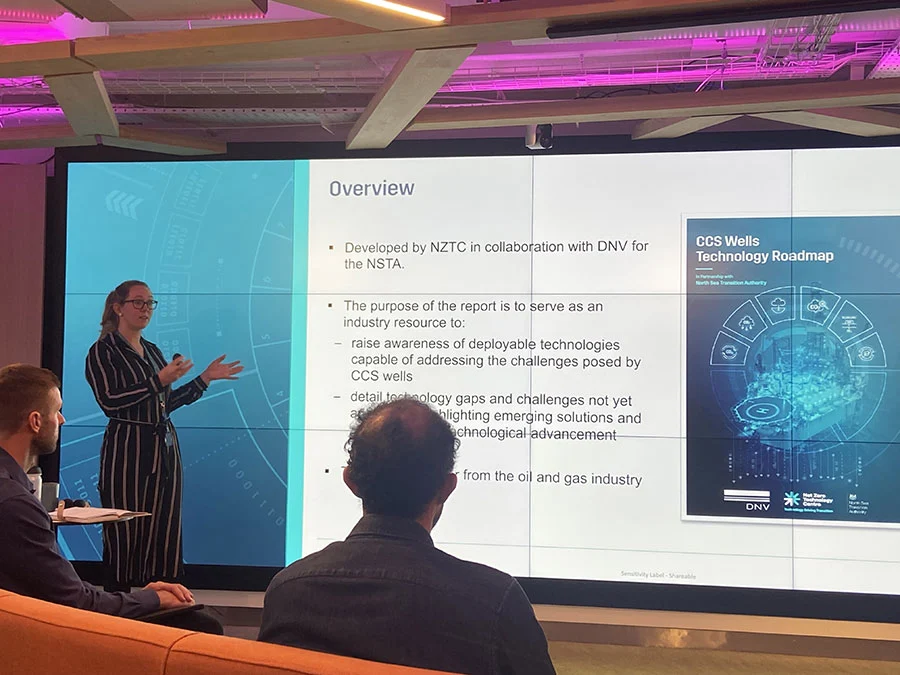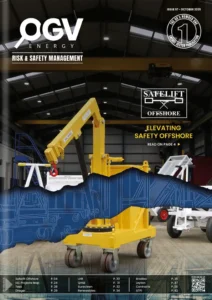A new industry resource has been launched, showcasing existing and emerging technologies for safe and sustainable development of carbon storage wells in the North Sea.
The CCS Wells Technology Roadmap report, developed by the Net Zero Technology Centre (NZTC) in partnership with DNV and commissioned by the North Sea Transition Authority (NSTA), profiles more than 60 technologies relevant to carbon storage well development and operation.
These solutions span four key areas: materials and equipment, intervention and workovers, monitoring, and remediation of legacy oil and gas wells.
The report is intended to inform UK operators as they progress 27 licensed carbon dioxide (CO₂) storage sites, supporting the UK’s 2050 net zero target by enabling long-term geological storage.
The UK’s offshore oil and gas sector provides a strong foundation for carbon storage well development, yet technical challenges remain, such as accelerated corrosion, pressure cycling and extreme temperature fluctuation. Long-term CO₂ storage also requires extended monitoring periods, with some regulators requiring over 30 years of post-closure surveillance.
Highlighted technologies include Noble’s new modular handling package, developed for the safe processing of CO₂ during well control events, with prototype testing scheduled for 2026; Aquaterra Energy’s solution for vertically re-entering legacy wells; Silixa’s fibre-optic sensors, which provide continuous data on well integrity and CO₂ plumes; and Welltec’s ‘Annular Barrier’, designed to secure wells against CO₂ leakage through the annulus.
Developed in close collaboration with industry, the report captures insights from operators and supply chain partners gathered through targeted workshops and one-on-one consultations.
This collaborative process not only informs the technology landscape outlined in the report, but also identifies key gaps and priority areas for future research and innovation. Additionally, the report highlights that revisions are required to existing regulations and guidance.
Catherine Sherwin, technology manager at NZTC, said:
“Successful carbon storage is critical to the future of the CCS industry – and that starts with wells that are safe, reliable and built to last.
“The UK’s strong track record in oil and gas well operations provides a solid foundation, but CO₂ storage presents unique technical challenges that demand adaptation and innovation. This report demonstrates how combining expertise with technology innovation can overcome these challenges, ensuring reliability and integrity in carbon storage projects across the North Sea and beyond.
“We appreciate our industry partners’ insights and collaboration – continued knowledge-sharing and collaboration are vital to advancing CCS at the necessary scale and pace.”
Keith Hogg, wells manager at the NSTA, said:
“Developing a robust carbon storage well infrastructure is critical to unlocking the full potential of the UK’s CO₂ storage capacity.
“This roadmap provides industry with a clear view of the technologies needed to deliver safe, efficient, and long-term storage – supporting our transition to net zero and enabling progress across the licensed storage sites.”
Zilvinas Petrauskas, senior engineer at DNV, said:
“DNV believes that CCS is at a turning point, with a number of upcoming projects growing significantly and with operational capacity increasing substantially in the near future.
“We hope this report on CCS Wells will help in de-risking and improving projects in the United Kingdom and beyond in a safe and reliable way, along with meeting net zero targets and making the UK the leader in CCS.”
The publication follows NZTC’s Emissions Measurement and Monitoring Technology Roadmap, also commissioned by the NSTA, which identifies solutions for tracking emissions from power generation, flaring and venting.
The CCS Wells Technology Roadmap report is intended as an informative resource to support operators and is not a specification or endorsement of particular technologies.
“Join the companies that smart energy professionals follow – because when you’re featured on OGV, the industry pays attention.”














